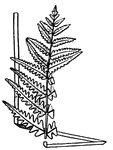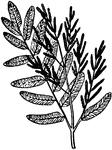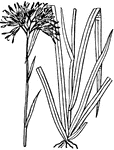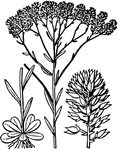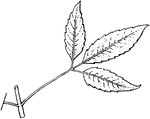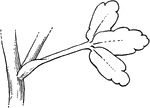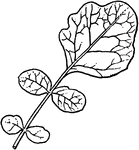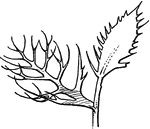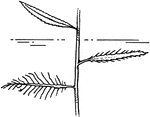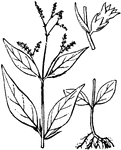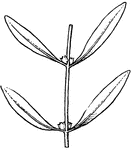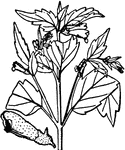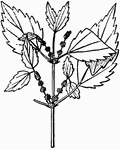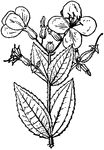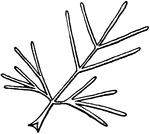
Leaflets narrowly linear, untoothed; plants annual.
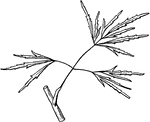
Leaflets wider, toothed; plants pernnial.

Leaves coming off a creeping or horizontal stem.

Stems 4-angled; flowers small, in dense clusters in the axils of the leaves.

Stems round, or nearly so, in cross-section; flowers showy, yellow.

Leaves with central mid-vein and smaller veins branching from this.

Base of petiole expanded; plants under 4 dm tall.

Base of petiole not expanded; plants large, 5 dm tall or taller.

Leaves with several prominent rib-like veins running from base to apex.
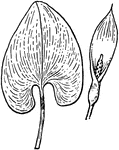
Leaves with blunt lobes; flower conspicuous, purple, not on a fleshy axis enclosed in a leaf-like sheath.
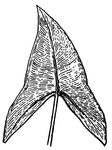
Leaves usually with sharp lobes; flowers individually inconspicuous, on a fleshy axis snclosed in a…

Leaves large (2 dm long or more), coming out of stout underground stems.

Leaves toothed; veins of leaf irregular.
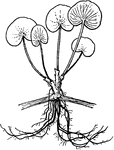
Leaves entire; veins of leaf nearly parallel.

"a poisonous plant, monk's-hood, wolf's-bane."-Whitney, 1902
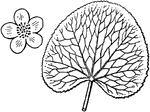
Plant small, less than 4dm tall; flowers yellow.
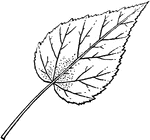
Plant large, over 5dm tall; flowers large, white, pink, or purplish.

Leaves mostly basal, heart shaped; flowers purple.
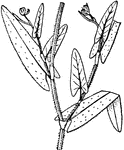
Sheaths around stem above each point of leaf-attachment; flowers white to red, not fragrant.
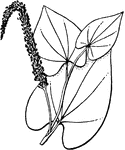
Stems with no sheaths; flowers white, fragrant.
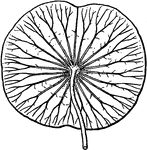
Leaves large, 2 dm or more in diameter, impossible to wet; flowers solitary, showy, yellow.

Leaves with several very prominent ribs running from base to apex.
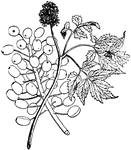
"Red Baneberry, showing flowering plant and fruiting raceme."-Whitney, 1902

Plants white-powdery above; plants extremely large, usually over 1 m.

Plants smaller; not wite-powdery above; leaves shed water easily; flowers along fleshy spike enclosed…

Flowers many; leaves large, over 10cm long.

Flowers solitary; leaves small, less than 5 cm long.

Leaf, when examined against light with lens, showing semitransparent dots; flowers yellow or pink.
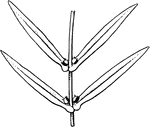
Flowers not showy, in axils of leaves, mostly purple.
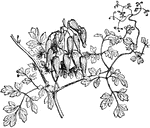
"Adlumia cirrhosa; single leaf and panicle"-Whitney, 1902
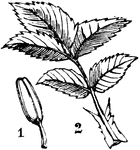
"Adnate Anther, Adnate Stipule."-Whitney, 1902

Leaves covered with tiny black dots visible with lens; flowers small, white.
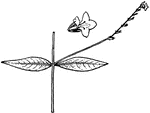
Flowers irregular, purplish.

Stems woody at least at base, arching; flowers purple-pink, in auxiliary clusters.
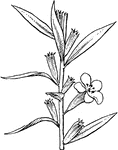
Flowers purple; plant usually corky at base.
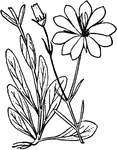
Flowers white, or, if pink, with a yellow or green eye in the center.
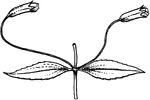
Calyx bearing no crest.
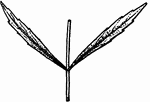
Flowers small, white, gathered in dense, sessile clusters in the axils of the leaves.

Leaves small, mostly under 3cm long; usually with black dots visible with a lens covering them.
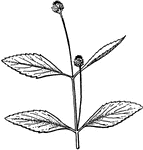
Plants decumbent at base and usually rooting at the lower nodes.
